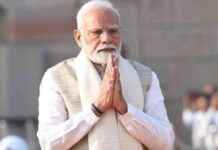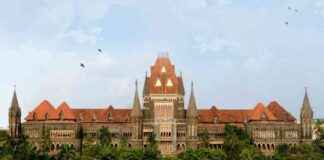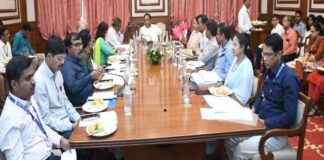Odisha Government in Talks to Join Ayushman Bharat Scheme
The Odisha government is currently engaged in discussions with the National Health Authority (NHA) to potentially become a part of the Ayushman Bharat-Pradhan Mantri Jan Arogya Yojana (PMJAY), according to sources within the Union Health Ministry. PMJAY offers an annual health cover of Rs 5 lakh per family for secondary and tertiary care hospitalization, aiming to provide financial protection to vulnerable families in need of medical assistance.
Sources have revealed that Odisha already has its own existing health scheme, the Gopabandhu Jan Arogya Yojana (GJAY), which was previously known as the Biju Swasthya Kalyan Yojana (BSKY). This state scheme extends Rs 5 lakh health coverage in private hospitals to rural families in Odisha, excluding government employees and income taxpayers. With an estimated 10.3 million eligible beneficiary families and reaching approximately 47.9 million individuals through 979 private empanelled hospitals, GJAY has been instrumental in providing healthcare support to a significant portion of the state’s population.
However, in order to align with the national PMJAY scheme, technicalities need to be addressed. These include integrating Odisha’s state scheme’s information technology platform with PMJAY and regularizing beneficiary lists to ensure a smooth transition. One of the key challenges highlighted by a senior government official is the difference in the basis of identification used by the two schemes. While PMJAY relies on Aadhaar for beneficiary identification, Odisha’s state scheme does not follow the same protocol. Therefore, efforts are being made to link the state scheme to Aadhaar to facilitate the seamless provision of benefits to eligible beneficiaries under PMJAY.
Integration and Financial Implications
Upon integration with PMJAY, the central government will share the financial burden for families eligible under the national scheme based on a 60:40 framework. This means that for those beneficiaries who meet the criteria set by PMJAY, the central government will bear 60% of the financial responsibility, while the state will cover the remaining 40%. However, for individuals not eligible under PMJAY, the state will fund the healthcare expenses from its budget.
An interesting aspect of the GJAY scheme in Odisha is the additional Rs 5 lakh coverage provided for women members of families after the initial limit is exhausted. This extra coverage for women will be funded by the state, showcasing a commitment to gender-sensitive healthcare provisions. The state’s emphasis on extending healthcare support to women is commendable and aligns with the broader goal of improving overall health outcomes for all segments of society.
Expanding Access and Coverage
With Odisha potentially joining PMJAY, the state stands to expand access to quality healthcare services for its residents. By integrating with the national scheme, Odisha will be able to tap into a wider network of healthcare providers and leverage the technological infrastructure set up by PMJAY. This move could significantly benefit the people of Odisha by enhancing the availability of healthcare facilities and reducing out-of-pocket expenses for medical treatments.
It is worth noting that as of now, 34 states and union territories have implemented the PMJAY scheme, with West Bengal and Delhi being the exceptions. Additionally, 18 states have successfully converged their existing healthcare schemes with PMJAY, demonstrating a growing trend towards collaboration and integration in the healthcare sector. States like Uttar Pradesh, Haryana, Uttarakhand, and Nagaland have even extended their employee schemes to align with PMJAY hospitals and IT platforms, showcasing a multi-faceted approach to healthcare delivery.
In conclusion, Odisha’s potential integration with the Ayushman Bharat-Pradhan Mantri Jan Arogya Yojana reflects a strategic move towards enhancing healthcare access and coverage for its residents. By synergizing with the national scheme, Odisha can leverage the benefits of a unified healthcare system and provide comprehensive medical support to its population. This collaboration between the state and central governments underscores a shared commitment to improving the health and well-being of all citizens, setting a positive precedent for future healthcare initiatives in the country.




















